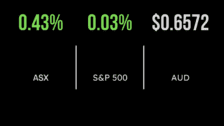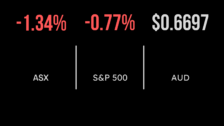China on a bull run, but can it last?
Just three months ago, Western investors increasingly perceived China as “uninvestable”, Longview Economics founder and chief executive Chris Watling observed in a recent research note. But the sudden reversal in November of its zero-COVID policy has inspired confidence that Chinese economic data is about to improve, and markets are responding.
In the three months since October 31, the MSCI China Index, which represents 85 per cent of the Chinese equity universe, has appreciated 41.2 per cent.
“The Chinese authorities have switched from significantly depressing activity via lockdowns to rapidly reflating the economy by opening up,” Watling said.
Open for business
Chinese households are ready to spend, Watling noted, with deposits close to 100 per cent of gross domestic product, up nearly 20 per cent from 2019.
Brandywine Global director of global macro research Francis A. Scotland cited reports that Chinese authorities are preparing to relax restrictions on developer borrowing and wind back the ‘three red lines’ policy.
Implemented in 2020, the measures imposed strict debt and cash-flow restrictions on real estate developers in an attempt to reduce leverage, lower risk and make homes more affordable.
Foreign policy appears to be shifting, typified by China lifting its unofficial ban and placing orders for Australian coal, Scotland said. Government officials have also been talking up business and the private sector.
At the World Economic Forum in Davos, China’s Vice Premier Liu He declared China open to the world after three years of global isolation.
“Foreign investments are welcome in China, and the door to China will only open up further,” Liu said in a January 17 speech at the annual meeting.
With China’s fast-tracked reopening and supportive housing rhetoric, Amundi recently upgraded its view on Chinese equities to positive. It also said demand from China, in addition to limited spare capacity, should support oil prices.
However, it noted that the reopening has already been priced in for base metals and that the asset manager has retained an equal weight rating on Chinese government debt.
“We remain slightly constructive and selective (given the geopolitical risks with respect to relations with the US and Taiwan), looking for long-term stories with the potential for sustainable returns,” Amundi said in its Global Investment Views report.
“Chinese debt offers strong diversification benefits to global investors, but we continue to monitor the mildly accommodative policy stance of the People’s Bank of China amid the economic reopening.”
New headwinds
Despite the positive signposts, Scotland warned that the public’s reaction to living with COVID-19 remains to be seen.
“For three years [the Chinese population] have been warned endlessly about the dangers of this disease,” he said. “To go from that to complete laissez-faire in the blink of an eye has been incredible.”
Moreover, pre-existing weakness in the property sector has affected both households and provincial governments. Weakening imports to the United States will also curb economic growth.
Notwithstanding the uncertainty, Scotland said he believes China will regain momentum in the second half of the year.
“Observing all these developments, our bias is to believe that the authorities will be successful in encouraging a rebound in the Chinese economy,” he said. “The CCP needs to see growth.”
Watling was less convinced. He said a meaningful and lasting recovery in China is unlikely in the absence of a prolonged housing recovery, large infrastructure spending or strong export growth.
While recent policy changes are positive, he said, past housing recoveries have been driven by a loosening in monetary policy and a subsequent phase of strong credit growth − something that has yet to meaningfully transpire this time around.
Current liquidity injections, including one of RMB$1.45 trillion in December, are relatively small compared with the last time China stimulated its economy in 2016.
“Today, the economy is considerably weaker than it was in those years,” Watling said. “The stimulus, though, is notably less.”
And, he noted, export-led economic activity is unlikely given a slowdown in the United States and the rising risks of a global recession.
“The evidence for a large/sustained re-leveraging of China’s economy is limited. As such, and while China’s ‘re-opening bounce’ may be sharp, it’s likely to be reasonably short-lived.”











